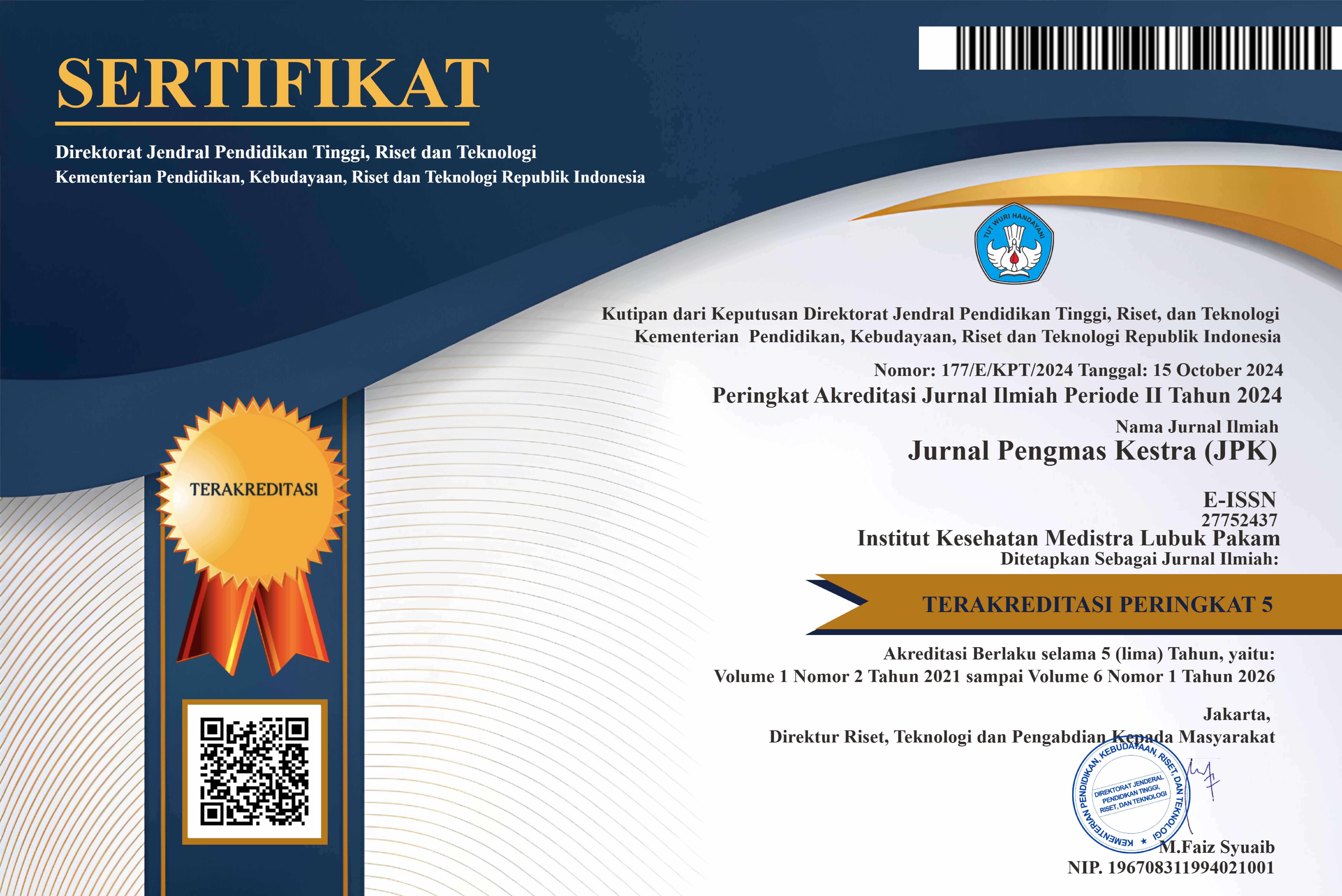SEMINAR OF EVALUATION OF THE USE OF CIPROFLOXACIN ANTIBIOTICS IN INFECTION PATIENTS URINARY TRACT (PUT) IN CARE INSTALLATION HOSPITAL GRANDMED LUBUK PAKAM
SEMINAR OF EVALUATION OF THE USE OF CIPROFLOXACIN ANTIBIOTICS IN INFECTION PATIENTS URINARY TRACT (PUT) IN CARE INSTALLATION HOSPITAL GRANDMED LUBUK PAKAM
DOI:
https://doi.org/10.35451/jpk.v2i2.1439Keywords:
UTI, EPO, Hospital, Antibiotics,Abstract
Urinary Tract Infection (UTI) This is an infectious disease characterized by the growth and multiplication of bacteria in the urinary tract. The most common etiology in more than 80% of uncomplicated UTI cases is Escherichia coli, and less than 50%, Proteus spp, Klebsiella pneumoniae, Enterobacter spp, Pseudomonas aeruginosa, Staphylococcus, and Enterococcus. Candida species are a common cause of urinary tract infection in patients with severe chronic catheterization. The clinical forms of UTI are classified according to age, intensity of inflammatory response, and location of urinary tract infection. Children aged 2 months to 2 years with a UTI require special attention because they are likely to have atypical clinical presentations, invasive urine specimen collection, and kidney injury. This study aims to determine the dosage and composition of the antibiotic ciprofloxacin in patients with urinary tract infections at Grandmed Lubuk Pakam Hospital for the period November-December 2021. The method used is a descriptive assessment because it aims to provide an objective picture or description of the situation. Data collection was carried out retrospectively. Both research by reviewing historical information, as well as data collection by observing the medical records of urinary tract infection patients at Grandmed Lubuk Pakam Hospital in 2021
References
Adiwibowo, M.G., Rahmawati I., Soemah E.N. (2019). Hubungan intensitas hemodialisis dengan kecemasan pada pasien gagal ginjal kronik yang menjalani hemodialisis di RS Sakina Mojokerto. http://repository.stikes-ppni.ac.id:8080/xmlui/handle/123456789/732
Bernstein, D., & P. Sheloves, S. (2016).Pediatri untuk mahasiswa kedokteran. . Jakarta: EKG.
Dipiro, JT, Talbert, RL, Yee, GC, Matzke, GR, Wells, BG, Posey, LM, (2017) Pharmacotherapy A Pathophysiologic Approach Ninth Edition, McGraw-Hill Education
Fitriani, (2013). perkembangan infeksi saluran kemih pada pasien dengan kateter tetap. S1 Ilmu Keperawatan Fakultas Kedokteran Universitas Hasanuddin Makassar.
Makmunah, L. (2016). Faktor risiko terjadinya infeksi saluran kemih pada anak di RSUD Blambangan Kabupaten Banyuwangi. kertas. Universitas Jember.
Pardede, SO. (2018). Ginjal Anak dan Infeksi Saluran Kemih: Manifestasi Klinis dan Manajemen. Sari Pediatric Journal, 19(6), hlm.365-373.Diakses pada 7 September 2019.
Peraturan Menteri Kesehatan Republik Indonesia (2016). Standar pelayanan kefarmasian rumah sakit. Jakarta: Permenkes RI. Halaman 58-63.
Purnomo B., 2011, Dasar-dasar Urologi, Penerbit Setyo, Maran.
Radio, M. (2016) Lehrbuch der Mikrobiologie: Pembimbing Mahasiswa Farmasi dan Kedokteran Jakarta: EGC.
Radio, M. 2016. Buku Teks Mikrobiologi: Panduan Mahasiswa Farmasi dan Kedokteran. Jakarta: EGC.
Radji, Maksum., (2018).Antibiotik dan Kemoterapi. Jakarta: Penerbit Buku Kedokteran EGC.
Rieuwpassa, Irene E., dan Mochammad Hata. 2016. Deteksi mutasi gen girase A pada resistensi Porphyromonas gingivalis terhadap ciprofloxacin berbasis teknologi polymerase chain reaction. Jurnal Kedokteran YARSI 17(1):011-020.
Downloads
Published
Issue
Section
License
Copyright in each article is the property of the Author.




















